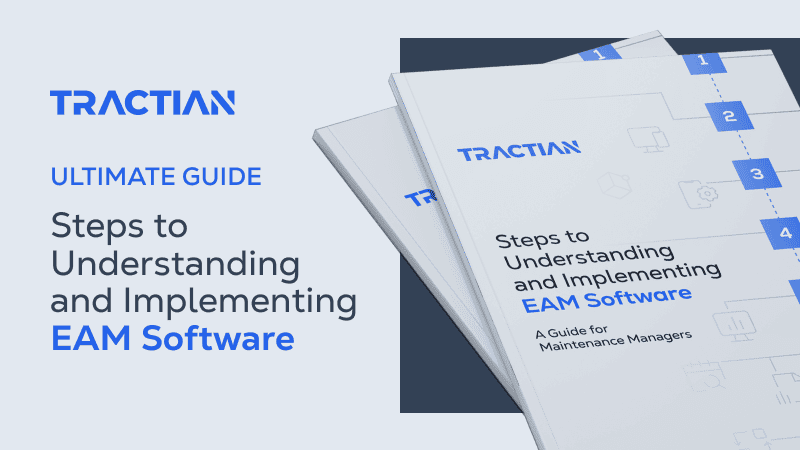Coincidences don’t happen on the factory floor. If the same problem keeps happening, it’s a sign something deeper is going on. When it comes to investigating these failures, the Five Whys method is one of the most practical tools available.
The Five Whys is a straightforward yet powerful way to reach the root cause of an issue. Instead of stopping at the surface, this approach challenges you to keep asking “why?” until you discover the true root cause of the problem.
For example: Why did the motor stop? Because it burned out. But why did it burn out? Maybe it overheated due to a lack of maintenance. Why was maintenance skipped? Possibly because there’s no automated system to trigger it.
In this article, you’ll learn how to apply this practice and eliminate recurring issues.
What Is the Five Whys Method?
The Five Whys is a root cause analysis technique designed to peel back the layers of a problem until the underlying cause is found. The idea is simple: keep asking “why?” until you get to the underlying issue.
Despite its name, you're not limited to five questions. The goal is to keep asking “why?” until you’ve uncovered everything underneath the surface.
When applied correctly, this method exposes structural flaws, process gaps, or even management oversights that a surface-level analysis would miss.
And the best part? You don’t need any complex systems or software to start. All it takes is a clearly defined problem and the determination to look beyond the obvious.
Why The Five Whys?
The Five Whys technique was created inside the Toyota Production System, developed by Taiichi Ohno as a practical, front-line tool for solving problems on the factory floor.
The goal was simple: empower operators to identify failures and correct them quickly, without having to rely on engineers or complex analyses.
This technique allowed companies to shift the responsibility for continuous improvement toward the people closest to the process.
Decades later, this approach still holds up. It’s not only used in manufacturing but anywhere teams need to go beyond surface-level solutions.
When to Use the Five Whys Method?
Not every investigation requires a full technical report. Sometimes, people just need a clear starting point.
The Five Whys method is especially effective when:
- You're dealing with a specific issue, like an isolated mechanical failure or an unexpected machine stoppage.
- Speed matters, and there’s no time for in-depth statistical tools or formal RCA frameworks.
- The failure has a single, straightforward cause.
- The team needs a structured, practical way to discuss the issue.
That said, this isn’t the right method for everything. If the problem involves multiple causes or events with complex interdependencies, you'll need a more comprehensive analysis, like FMEA or the Ishikawa Diagram.
An Example of The Five Whys In Action
Let’s look at a real-world shop floor scenario: a critical motor in the production line suddenly stops working.
The line goes down and the team scrambles to fix it while production is delayed. In the short term, they get things running again, but no one takes the time to understand what caused the failure. Now, they risk the same thing happening again.
Here’s how we’d apply the Five Whys method to get to the bottom of things:
Why did the equipment fail?
Because the motor overheated during operation. The protection system automatically shuts it down after detecting temperatures beyond safe limits. This means it wasn’t a mechanical failure, it was a safety response.
Why did it overheat?
Because the cooling fan wasn’t working. Without the fan, the motor’s temperature spiked.
Why did the cooling fan fail?
Because the component hadn’t been serviced in a while and was jammed. During inspection, the maintenance team discovered that the jam prevented the fan from operating properly.
Why was its service missed?
Because there was no scheduled work order to inspect or lubricate the fan. It wasn’t included in the plant’s preventive maintenance plan, so it had been overlooked.
Why don’t we have an automated preventive maintenance system?
Because maintenance scheduling is still handled manually.
Now we’ve reached the real root cause. The motor failure didn’t start at the moment of shutdown-it was the result of a gap in the maintenance management process.
This is exactly the type of insight the Five Whys method is designed to uncover. In just a few questions, the team moves from symptom to source.
3 Advantages of Five Whys Analysis
Here’s what makes this method so effective:
It’s Cost-Efficient
You don’t need anything to apply the Five Whys. All it takes is a well-defined problem and the right people involved.
Because it requires no software, no consultants, and no extensive prep time, it can be used in real-time without disrupting operations.
Even better, when you eliminate recurring issues using this method, you reduce unplanned downtime and cut related costs too.
It’s Simple
This method’s biggest strength is its simplicity. You can use it pretty much anywhere, anytime.
You don’t need special training or digital tools, either. All you need is your team and some time.
The more naturally this kind of thinking becomes part of the team’s day-to-day work, the stronger your plant’s overall reliability becomes.
It Gets to the Root of a Specific Issue
Unlike broader methodologies, the Five Whys is built to go deep on a single problem.
By following a direct cause-and-effect line, it helps isolate the failure and identify exactly what needs to be corrected.
This is especially useful for isolated issues that tend to repeat simply because no one ever addressed the real cause, just the immediate symptom.
That’s why this technique is so widely used on the shop floor, especially in industries where teams need fast, focused answers.
3 Disadvantages of the Five Whys Method
While simplicity is one of the biggest advantages of the Five Whys, it can also be a limitation. Here are a few reasons the method might fall short:
Narrow Scope of Analysis
The Five Whys follows a single chain of causality. That’s great for simple issues, but when multiple factors are at play, this narrow focus can overlook key relationships between different causes.
In complex failures, this approach risks landing on a “convenient truth”-something easy to explain, but not deep enough to prevent the issue from happening again.
It’s Prone to Bias
Because this method relies heavily on the team’s own reasoning, it’s easy for investigations to follow existing assumptions.
That can lead to conclusions based on opinions rather than evidence. Without concrete data, the team may unknowingly reinforce a false narrative and miss the real root cause.
It Relies on Team Knowledge
The quality of your Five Whys analysis hinges on the people involved.
If the team doesn’t fully understand the asset or its failure history the investigation can stall at surface-level answers.
That’s why it’s critical to pair this method with real operational data, maintenance records, and the experience of those who work closest to the problem.

Complementary Tools for Root Cause Analysis
Sometimes, the Five Whys alone isn’t enough, especially in complex scenarios. Depending on the situation, you may need to enlist the help of other tools.
Here are three different approaches and how they compare to the Five Whys:
Five Whys vs. Fault Tree Analysis (FTA)
The Five Whys follows a single line of reasoning, which is great when there’s a clear cause behind a problem.
On the other hand, Fault Tree Analysis is designed to map out every possible path to failure. It does this by starting with the problem and branching out to show multiple contributing factors.
It’s a good fit for complex issues where several variables are in play. If a failure involves a mix of conditions-like a sensor malfunction, human error, and a missed maintenance window-FTA gives a fuller picture.
Key Differences:
- FTA is better suited for critical failures and complex systems.
- It offers a broader view but requires more time and structure to execute.
- Five Whys is faster and more practical when time is of the essence.
Five Whys vs. Fishbone Diagram (Ishikawa)
The Fishbone Diagram, also known as the Ishikawa Diagram, is great for organizing ideas and mapping out multiple factors that might contribute to a failure.
It’s designed to explore multiple hypotheses at once by categorizing potential causes into key areas like method, machine, material, manpower, environment, and measurement.
This tool is widely used in technical brainstorming sessions and works especially well when teams need a broad overview of a complex issue.
This is why it’s especially powerful when combined with the Five Whys: start with the Fishbone Diagram to map out every possibility, then use the Five Whys to drill into the most likely causes.
Think of it this way: the Fishbone allows you to zoom out to see the bigger picture, while the Five Whys helps you zoom in.
Five Whys vs. FMEA
When compared to Five Whys, Failure Mode and Effects Analysis (FMEA) is a more strategic and proactive approach.
It maps out all the potential failure modes for a process or asset and ranks each one based on three criteria: severity, occurrence, and detectability.
In other words, FMEA is about evaluating everything that could go wrong so you can take preventive action before it happens.
This technique is typically used when planning new processes or redesigning critical equipment. Unlike the Five Whys, FMEA doesn’t wait for a failure to happen,it anticipates it.
Key Differences:
- FMEA is proactive and quantitative.
- It’s more time-intensive and requires in-depth technical knowledge of the system.
- Five Whys is reactive and qualitative, focused on events that have already occurred.
In the end, these tools aren’t competing, they’re complementary. The key is knowing when to use each one, and when to combine them.
How Can the 5 Whys Method Prevent Future Equipment Failures?
When done well, Five Whys analysis can actually become a cornerstone of predictive maintenance.
This is because it prevents short-term fixes. By identifying the root cause of a failure,, you permanently eliminate the issues that caused the problem in the first place.
This doesn’t just prevent the problem from happening again. It allows the team to adjust processes, refine preventive maintenance plans, and even transform day-to-day operational behavior.
Let’s go back to the first example: a motor fails due to overheating. The cause is a cooling fan that wasn’t lubricated. Replacing the part alone won’t solve the real problem.
A Five Whys investigation might reveal the true issue-a lack of an automated system for scheduling work orders. By implementing an automated work order system, the motor (and every other asset with similar operating conditions) becomes much more reliable.
This approach goes beyond damage control. It also enables you to:
- Fix the process, not just the failure.
- Prevent repeated operator errors or task omissions.
- Adjust preventive maintenance strategies based on actual failure data.
- Build a culture of continuous improvement and shared learning.
What Are Common Pitfalls When Applying the 5 Whys Analysis?
To get the most out of this method, the Five Whys must be implemented intentionally. If it’s not, you risk missing critical causes or worse, implementing solutions that don’t actually resolve the issue.
Here are some of the most common mistakes to avoid:
Stopping at the First Answer
This is a classic pitfall, and happens when the team finds a plausible cause and stops digging.
The result? You address the symptom, but not the actual source of the failure.
Ignoring Data and Evidence
This method is qualitative, but that doesn’t mean it relies on opinion alone.
Whenever possible, validate your answers with operational data, maintenance logs, or technical records. Without that foundation, your team might misinterpret the problem..
Letting Bias Drive the Analysis
Sometimes teams start with a conclusion already in mind. This can steer the investigation down a predetermined (and often wrong) path.
To avoid this, keep the focus on the problem, not on assigning blame.
Doing It Alone
Running a Five Whys analysis without involving people who understand the process or equipment limits the quality of your findings.
It’s best as a team effort; combining different perspectives leads to better answers.
Failing to Implement Corrective Actions
Getting to the root cause is only half the job. You have to take action to keep the problem from coming back.
That’s why every analysis should feed directly into a clear action plan, ideally one tracked with KPIs.
How Does Root Cause Analysis Impact Overall Maintenance Costs?
Every failure comes at a cost, but the biggest expenses don’t come simply from replacing parts.
They come from lost time, disrupted routines, and rework. When root causes aren’t addressed, problems return. And when they return, it’s even more expensive to fix.
Root cause analysis directly reduces these hidden costs.
By identifying and eliminating the problem at its roots, you reduce the need for reactive maintenance and optimize your team’s time and resources.
Here’s the kind of tangible impact this method creates:
- Fewer unplanned stoppages: Every minute of downtime hits your budget. Preventing a failure is almost always cheaper than fixing one during production.
- Less waste on parts and materials: Fixing the root eliminates redundant spending.
- Smarter labor allocation: Reactive work strains maintenance teams. With fewer emergencies and more predictability, labor hours are used more strategically.
- Better resource planning: When causes are clear, you can revise PM schedules, optimize inventory, and avoid costly last-minute purchases.
More than just reducing cost, root cause analysis delivers predictability, unlocking more stable, more efficient operations.
How Condition Monitoring Helps You Anticipate Failures
Root cause analysis is a pillar of modern maintenance. But on the shop floor, it only works when it's grounded in real data.
Without hard evidence, teams rely on guesswork, often missing what’s really causing the issue. And when failure data comes too late, even the best analysis becomes a post-mortem.
That’s why smart sensors are essential.
By continuously monitoring vibration and temperature, subtle shifts in asset behavior are detected long before visible signs of failure show up. These insights give your team the time and clarity they need to enable more confident decisions.
Here’s what that looks like in practice:
- Your maintenance team can act proactively, intervening before small issues escalate into major breakdowns.
- Every alert is backed by historical data, helping you see exactly what’s happening and why.
- Response time shrinks and accuracy improves because data is already logged and accessible.
Applying the Five Whys with real-time insights from condition monitoring leads to faster, more accurate, and more reliable investigations.
Want more confidence in your root cause analysis? Discover Tractian’s condition monitoring copilot and turn uncertainty into operational clarity.



